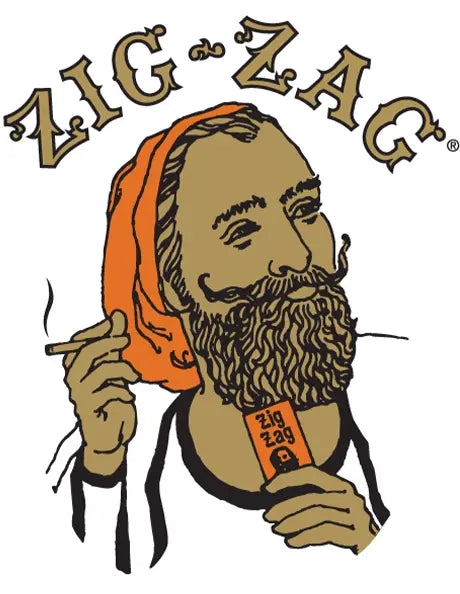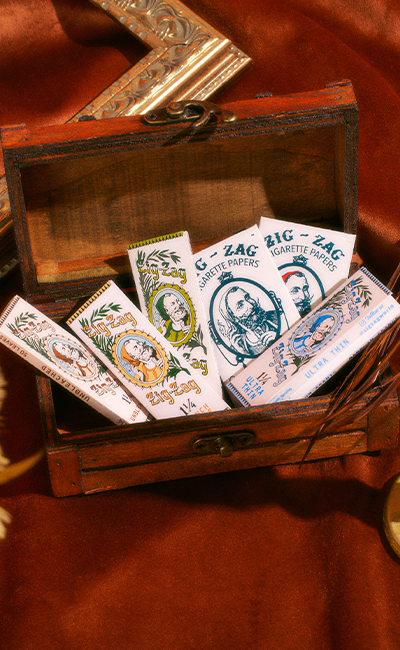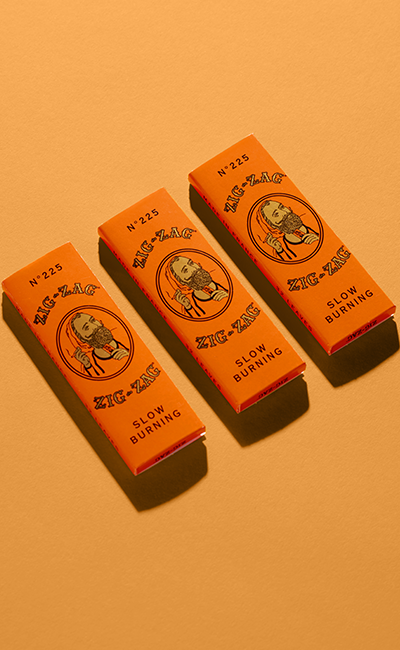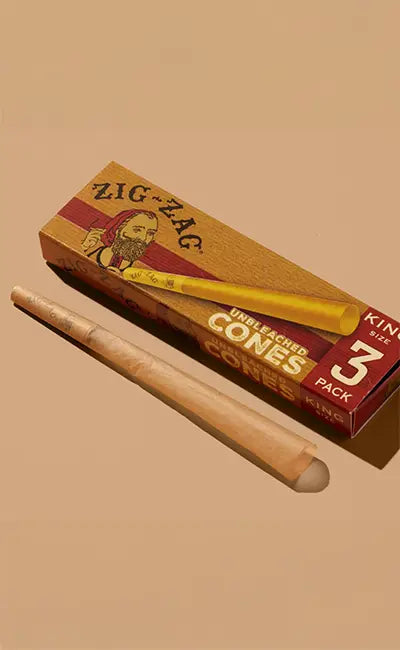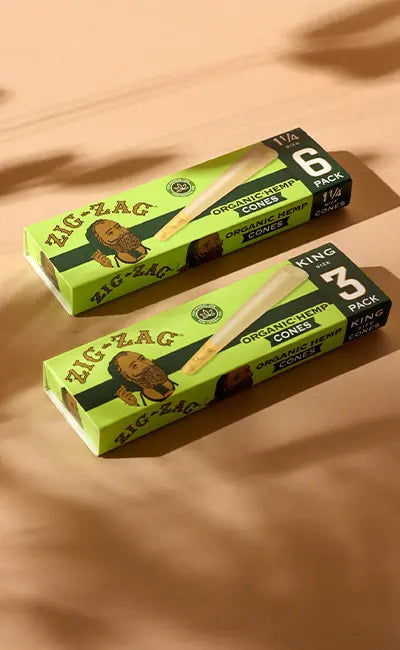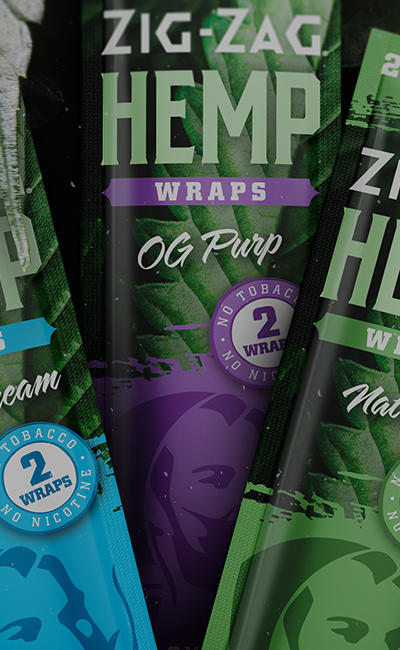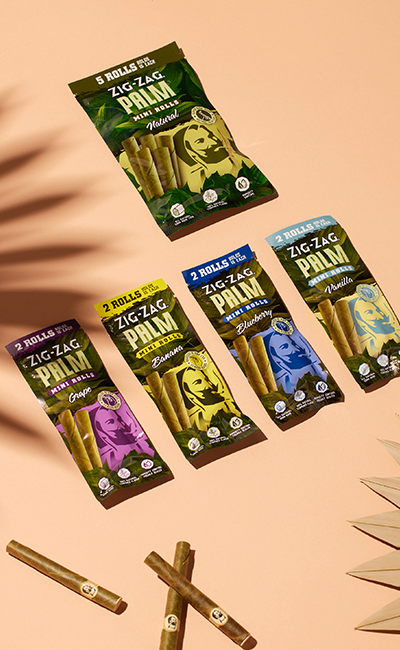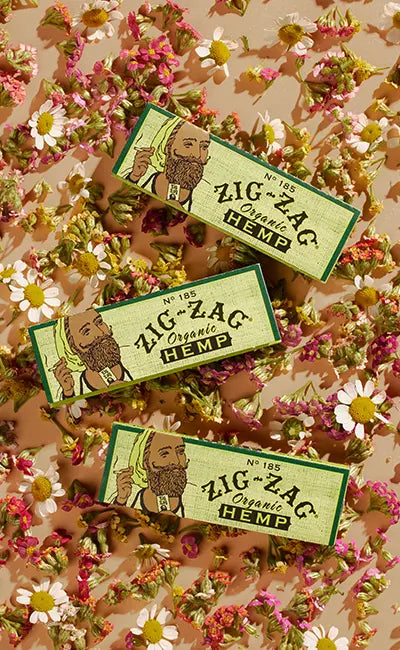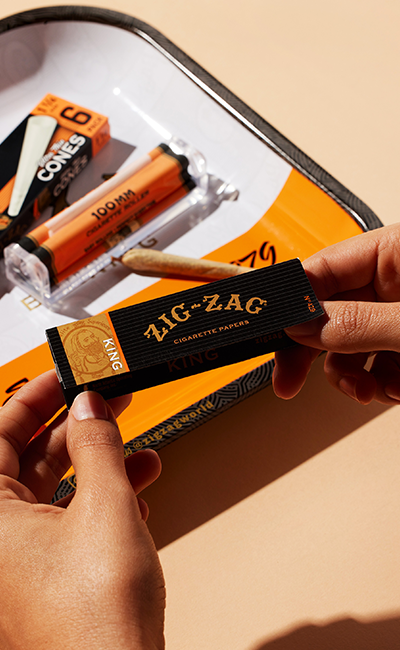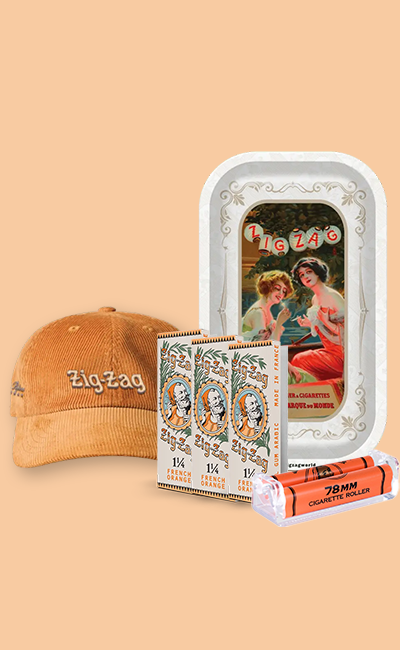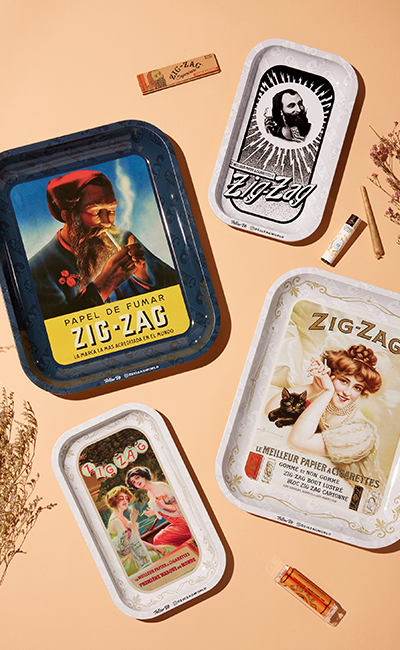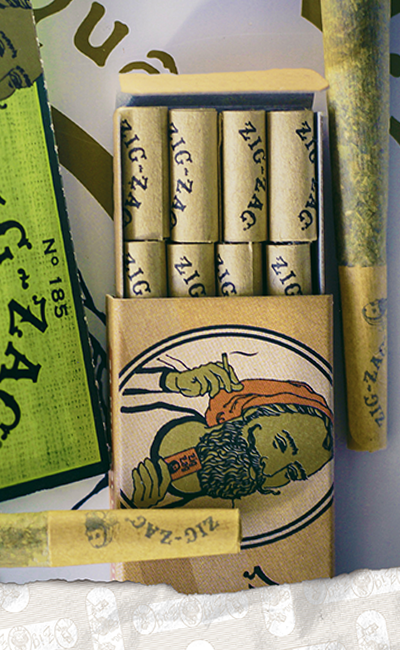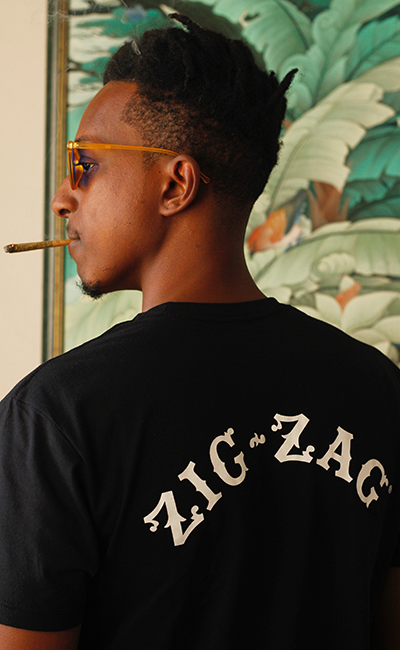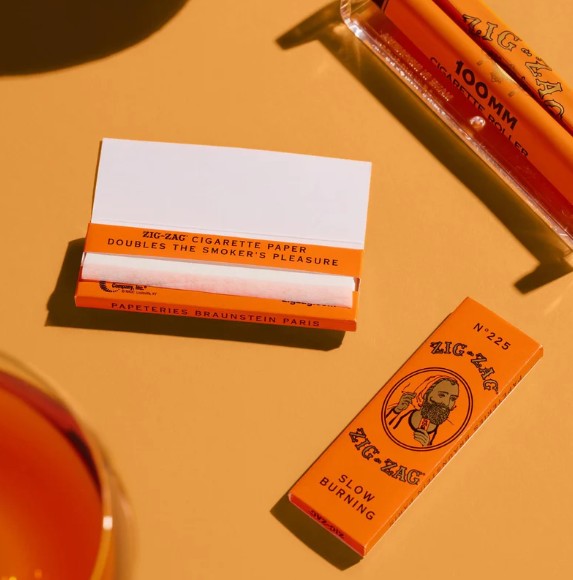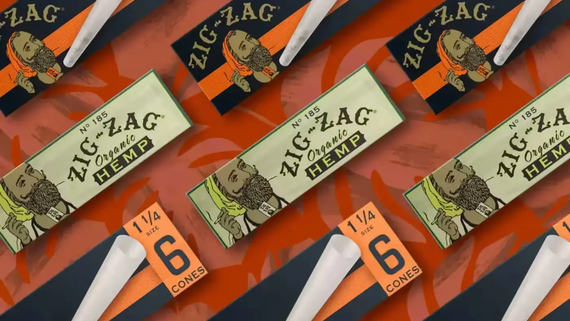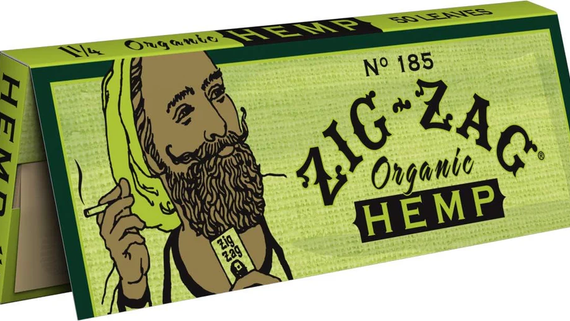What Makes the Best Roll Paper? A Look at Zig-Zag’s Timeless Standards
There’s a reason you keep seeing that iconic orange pack, year after year. At Zig-Zag, we’ve been making the best roll papers since 1879, and we’ve seen just about every trend come and go. But one thing hasn’t changed: people still want paper that’s reliable, familiar, and doesn’t let them down when it counts.
We’ve tested more papers than we can count, and let’s just say... not all of them hold up. In this guide, we’ll walk you through the key differences that matter: materials, styles, and legacy, so you can find the right fit without wasting time (or your stash).
The Legacy Behind Zig-Zag Rolling Papers
Zig-Zag has been around for over 140 years for a reason: reliability, consistency, and a paper you can trust. We didn’t just show up one day with fancy packaging. We earned our stripes by sticking to quality while adapting with the times.
We got our start in 1879, in the south of France. Back then, everything was manual, machines weren’t even part of the picture. What we did have? Precision. Focus. And a commitment to keeping things consistent. That mindset still fuels how we make our papers today.
Here’s why that matters for you:
-
We’ve tested just about everything: When you’ve been in this space for over a century, you’ve seen trends come and go. Rice papers, cones, packaging gimmicks, we’ve been through it all.
-
We keep what works: Our rolling papers haven’t changed much, and that’s on purpose. If it’s not broken, we don’t fix it.
-
We’ve been part of rolling culture for decades: From rap lyrics to old-school posters, you’ve probably spotted Zig-Zag even if you didn’t realize it.
We’ve stayed relevant by respecting what makes roll culture personal. You don’t need 20 flavors or a gimmick that lights up. You just need something that works. And that’s where our focus has always been.
Comparing the Classics: Paper Types That Define the Brand
Zig-Zag has more than one kind of paper, and each type serves a real purpose. You’ve got options, but not the overwhelming kind. Just the essentials, refined over decades. Here's what you're working with:
White Classic: The Daily Driver
This one's been around for ages, and still makes sense as a go-to.
-
Medium weight for easy control
-
Works for all experience levels
-
Consistent burn pattern that doesn’t fight you mid-roll
If you're the type who likes your routine just how it is, White Classic is probably already in your stash box.
Kutcorners: Less Fumbling, More Rolling
We added corner cuts to make rolling easier, especially for those quick setups.
-
Slightly angled corners help with tucking
-
Makes the whole roll feel smoother and faster
-
Great when you’re rolling on the fly and don’t wanna mess around
Think of Kutcorners like training wheels, but cooler.
Ultra Thin: For Those Who Want Less Paper
You ever tried something so light it barely felt like anything was there? That’s Ultra Thin.
-
Almost transparent
-
Minimal paper taste (because some people care about that stuff)
-
Burns slower than thicker options
Organic Hemp: Natural Feel, No-Nonsense Construction
You want a paper that skips extras? This is it.
-
Made from organic hemp fibers
-
No color additives
-
Unrefined and sturdy enough to hold its shape
They’re part of our hemp papers collection, which is all about keeping things straightforward and intentional.
French Orange: The Classic’s Classic
We saved this one for the heads who know. The Orange Rolling Papers's been around forever, literally.
-
Rich legacy from our original lineup
-
Medium-weight and super reliable
-
Recognizable from a distance (and yeah, people notice)
Ask anyone who's been rolling for a while, and odds are they’ve got a French Orange story, or they’ve borrowed one off a friend who does.
Rolling Cones vs. Rolling Papers: Which Format Works for You?
The right format depends on how hands-on you want to be. Pre-rolled cones are built for speed and simplicity. Classic papers give you full control. One’s not better, it just depends on how you roll (literally and metaphorically).
Here’s how they actually compare:
|
Feature |
Rolling Cones |
Classic Rolling Papers |
|
User Setup |
Pre-rolled with built-in tip |
Flat sheets, requires manual rolling |
|
Ease of Use |
No rolling required |
Needs full technique |
|
Format Flexibility |
Limited sizes but easy to use |
Huge variety of sizes and materials |
|
Speed |
Ready to fill, fast prep |
Takes more time to get right |
|
Skill Level |
Great for beginners |
Appeals to all levels, especially experienced rollers |
Why Some People Stick With Cones
Let’s be honest. Some days, you just don’t have time to roll from scratch. Pre rolled cones make life easier:
-
Already shaped, so there's no folding or sealing
-
Built-in tip means one less thing to fumble with
-
You can pack them quickly, even one-handed
What You Get With Classic Rolling Papers
Papers give you more room to experiment. You’re not locked into one size or style. Want to roll something tight and short? Easy. Want something longer with less paper? You can do that too.
-
More control over size and shape
-
More options across thickness and paper types
-
Feels a little more custom, like making something your own
If you've ever rolled with our rolling pages, you know how different each one feels. Cones are quick, but papers offer precision. And that matters once you’ve been doing this long enough.
Material Quality Sets the Standard
Good roll paper isn’t just about the format, it’s about the stuff it’s made from. You can have the perfect shape, size, and design, but if the paper’s low-grade, you’ll notice. Fast. Burn issues. Folding problems. Weird taste. It’s one of those things you don’t realize matters, until it does.
Why Zig-Zag Paper Holds Up Better Than Most
We’ve spent decades figuring out which papers perform under pressure (literally). It’s about the balance between structure, airflow, and finish.
-
Holds shape during packing: Doesn’t wrinkle or fall apart mid-roll
-
Burns at a consistent pace: No runaway edges or uneven airflow
-
Feels right in your hands: Not too stiff, not too flimsy
-
Doesn’t compete with your material: No weird overtones or aftertaste
And no, we don’t flood the market with gimmicks. If a paper’s in our line, it’s been tested by us and by real customers who don’t hold back with feedback.
Finding Your Fit: Which Zig-Zag Paper Should You Start With?
There’s no one-size-fits-all roll paper. That’s the point. What works for your friend might feel all wrong in your hands. Some people want simplicity.
We’ve heard from first-timers who started with Kutcorners because their hands weren’t quite cooperating yet. And then there are the users who’ve been rolling since flip phones and still swear by French Orange.
So here’s a no-BS cheat sheet:
For Beginners
Start with: Kutcorners or Original Cones.
Why?
-
Easier to grip and roll without tearing
-
Angled corners help with the tuck (seriously, it helps)
-
Cones skip the rolling part altogether, which is great when you’re just getting the hang of things
If it’s your first time doing this solo, give yourself a break and go with what’s easy.
For Natural Enthusiasts
Go for: Organic Hemp Papers.
Why?
-
Made from unrefined hemp fibers
-
No bleach, no nonsense
-
Smooth finish and a steady roll
You want something that feels more grounded? Hemp’s a solid pick.
For Less Paper Taste
Choose: Ultra Thin
Why?
-
Minimal interference with your material
-
Near-transparent build
-
Slower burn if packed right
This one’s for people who want to feel like there’s almost nothing between them and the material, without the mess of a bad roll.
For Rolling Tradition
Stick with: White Classic or French Orange
Why?
-
Medium-weight and familiar
-
Legacy design that’s been around for generations
-
You’ve probably seen them at your uncle’s house (or your friend’s dad’s garage setup)
There’s something cool about using the same paper your older cousin used back in the day, and it still works just as well now.
What Should You Look for in Roll Papers?
You don’t need a stack of reviews to know when a roll paper works. You just need to pay attention to a few key things: material, size, texture, and how well it seals. Once you know what matters, choosing the right one becomes less of a guessing game and way less frustrating.
We’ve tested tons of papers over the years (some better than others), and here’s what always makes a difference:
Material
Wood pulp. Rice. Hemp. They all hit different.
-
Wood pulp is easy to handle and doesn’t tear under pressure.
-
Rice paper is thin and slow-burning but can be tricky to roll.
-
Hemp has a textured grip and feels more natural.
Some people stick to one forever. Others rotate based on mood or what’s on hand. No wrong move here, just know what you’re working with.
Size
One size doesn’t fit all, and yes, it matters.
-
1¼ is the most balanced.
-
King size gives you more room to work with.
-
Slims are great if you want less paper involved.
If you're not sure where to start, go 1¼. That’s what most users learn on, and many never switch.
Texture & Thickness
The feel of the paper matters more than you think.
-
Thinner sheets usually burn more slowly
-
Thicker ones are more forgiving, especially if you're rolling with less experience
-
Uneven texture? That’s a red flag
If it crinkles weird or tears easily, it’s probably not worth your time.
Sealability
This one separates the good from the “why did I even buy this?”
-
A reliable gum line should seal fast and stay shut
-
You shouldn’t have to lick it twice
-
No sticky mess, no peeling mid-roll
We’ve had customers tell us they used Zig-Zag just because other brands kept unrolling mid-session. Gum line issues will do that.
Conclusion: The Best Roll Paper? It’s the One That Actually Works
You don’t need a wild design or fancy packaging to know you’ve found the right paper, it just works. And that’s kind of the whole thing with Zig-Zag. We’ve kept it simple for over 140 years because that’s what’s earned trust. Not gimmicks. Not trends.
We’ve seen it play out with longtime customers who come back for the same paper they started with years ago. We’ve also seen new rollers try a few random brands, run into issues, and then switch to Zig-Zag after one pack.
We’re not gonna tell you what to use. But if you’re looking for something that’s been around, been tested, and still hits? We’re right here.
It usually comes down to how it holds up during the roll and the burn. A good paper won’t fold or wrinkle at the wrong time, and it’ll seal up without fighting you. People often forget to look at texture and thickness, but those are huge. If the paper feels flimsy and seals like a sticker from a vending machine, skip it.
Not always. Some users swear by Ultra Thin because it barely gets in the way. But if you’re new or a little heavy-handed, thin papers can tear easily. We’ve seen people go through three sheets trying to get it right. So, it depends on your skill level and how precise you like to be.
You won’t always know until you try it. But a good sign? Even texture and no shiny patches. We’ve tested dozens, and uneven fiber distribution usually leads to runs. Also, make sure the gum line isn’t overloaded. That can mess with airflow and cause hotspots.
Wood pulp is thicker, more forgiving, and great for everyday use. Hemp tends to be more textured and natural feeling. Rice papers are the thinnest and often slow-burning, but they need a steady hand. We’ve had people love rice for flavor preservation, but hate how delicate it feels during the roll.
Because sometimes it’s just easier. No setup, no folding, no stress. We know folks who’ve been rolling for years but still use cones when they’re short on time. It’s not about skill—it’s about convenience.
Yes, 100%. A weak or uneven gum line can ruin the seal. That means you might end up with a loose roll or worse, a re-do. Zig-Zag uses a natural Arabic gum line for a reason: it works, holds fast, and doesn’t leave weird residue. People underestimate it until they don’t get the seal they need.
There’s nostalgia in the Vintage Collection, but the quality hasn’t dropped. We’ve kept the same paper weight and standards. The main difference? Packaging. But people still collect the old ones just because the branding goes hard.
If you want something simple, 1¼ is a solid middle ground. Not too short, not too long. King size works if you’re rolling for more than one person. Some people like to mix it up based on the day, which we respect. No rules here, just preference.
We don’t do flavors, so we might be biased, but hear us out. Most flavored papers use additives that mess with the paper’s performance. We’ve heard all kinds of stories about weird aftertastes, sticky textures, and burn issues. It’s why we stick to the basics.
